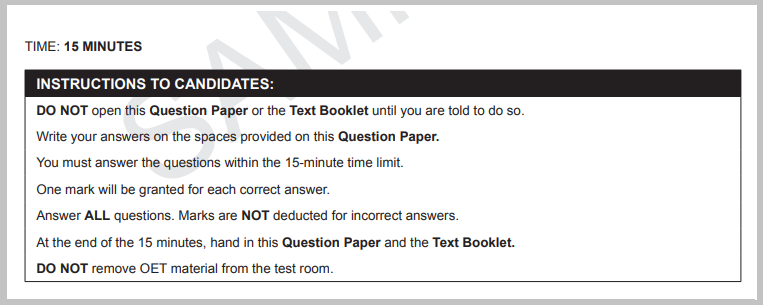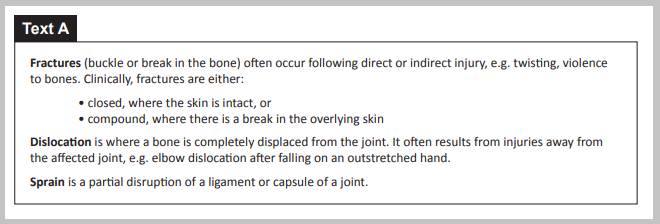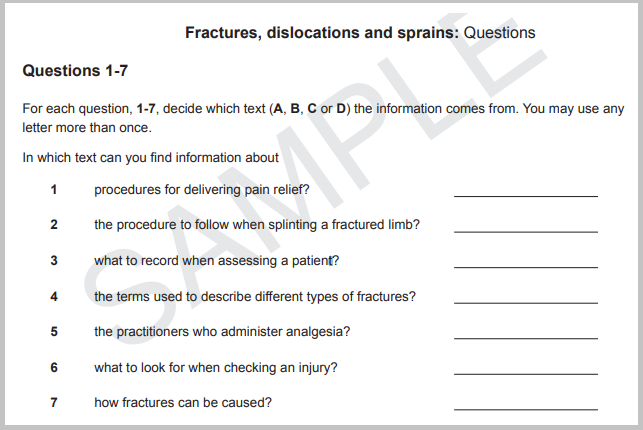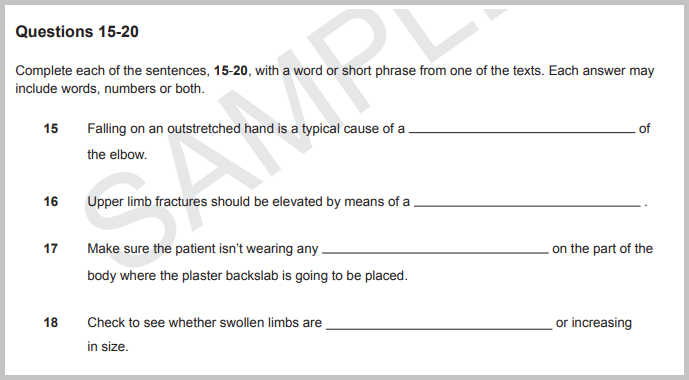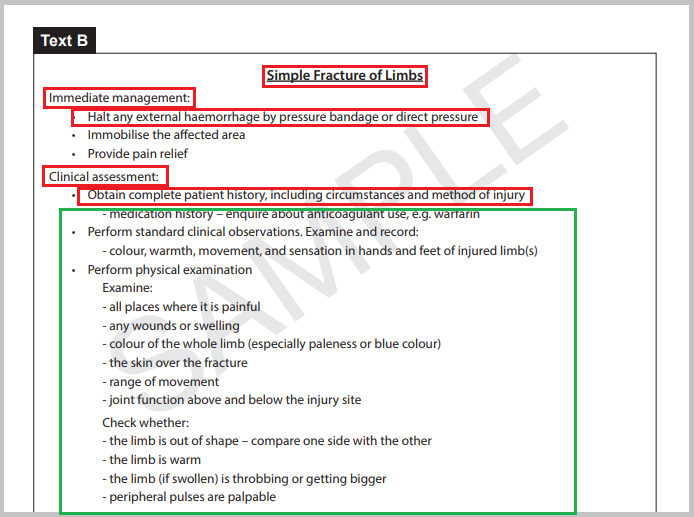OET 2.0 OReading Part A can be tricky. Remember in this section of the exam…
- You have only 15 minutes to answer all of the questions. After 15 minutes the test paper will be taken away and you won’t have time to check your answers.
- You have to answer 20 questions in 15 minutes. That’s just 45 seconds per question! Therefore speed is essential in this section of the game.
Therefore it is important that you improve your understanding of the test format and the important techniques that are required to achieve a passing grade.
You can find more information on the Reading Test on the Official OET Website.
1. Understand the test format
The Reading exam in total contains three sections: Part A, Part B and Part C. This article will focus on Part A only.
The first thing you will see inside the test paper (after the above exam instructions) are four texts (A-D) for you to read.
The texts will most likely relate to one topic. For example if the topic is ‘cancer’ then Text A might be about ‘symptoms of cancer’, Text B might be about ‘cancer statistics’, Text C might be about ‘cancer treatments’ and so forth.
Here is an example of a Reading Part A text.
Later on in this article we will discuss how to read each text passage.
After reading a passage you will then have to answer two types of questions.
Matching paragraphs – The first 6-8 questions will ask you to match specified information to each of the texts. For example: “Text C discusses cancer treatment.’
Short answer question types – The remaining 12-14 questions will be either ‘short answer questions’ or ‘fill-in-the-blank’ type questions.
Don’t go into the exam unprepared. Take some time to understand the test format and question types by looking at practice papers and this will massively improve your grade.
Read our article on OET 2.0 Changes Explained for more information on test formatting.
2. Skimming and scanning
Skimming and scanning are essential techniques in the OET exam, especially in Part A. Remember we only have 45 seconds for each questions therefore we can’t waste any time.
The number one rule is…
Don’t waste time reading everything in Part A. Once you have quickly skimmed the texts move on to the questions straight away.
We simply don’t have time to read all four texts. You should skim the passage for a general overview and then move on to the questions.
Skimming
Skimming means to quickly run your eye over the passage to understand the main purpose of each text and a few key points.
You should…
- Spend 2 minutes skimming all four passages.
- Read through the titles and the first sentence of each paragraph.
- Quickly run your eye over the paragraph for a few seconds.
Doing this will give you enough information to answer the first 20 questions. Of course you will still need to check back on your answers as you work through them but do not waste time reading all of the paragraphs.
Scanning
Scanning is almost the opposite of skimming and requires for you to look for very specific words within the passages.
The first step is to read the questions and to decide on keywords in the question.
Then look back through the text and attempt to find your keyword.
Before reading the surrounding sentences to confirm what the correct answer is.
Let us know in the comments: what is the answer to question 15?
3. Practice makes perfect
Reading Part A is considered to be the easiest section of the subtest and has 20 available marks.
As we discussed recently in another article the passing grade for OET 2.0 reading is around 29/42. Therefore Reading Part A is a great opportunity to get as many marks as possible before those difficult Part B and Part C sections.
The most important tip is practice.
Simply put:
The more exams you do the higher your result. If you don’t complete practice tests before your exam you are unlikely to pass.
Remember to follow these three important reading tips while preparing for your exam.
Have an OET Reading Part A tip?
We’d love to hear from you! And remember to check back for new articles in the series.
Leave a comment in the box below and our teachers will get back to you.

